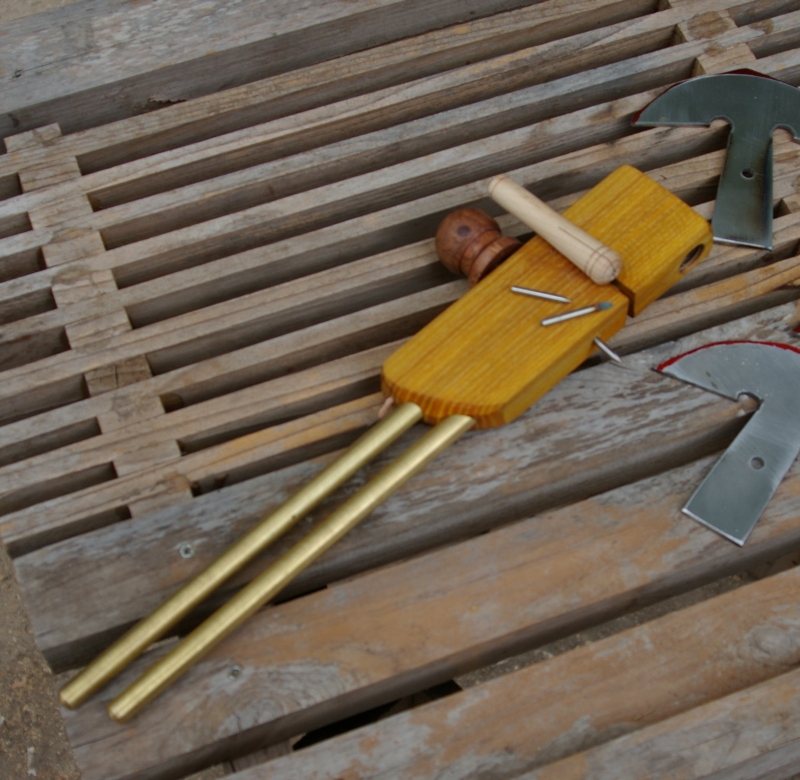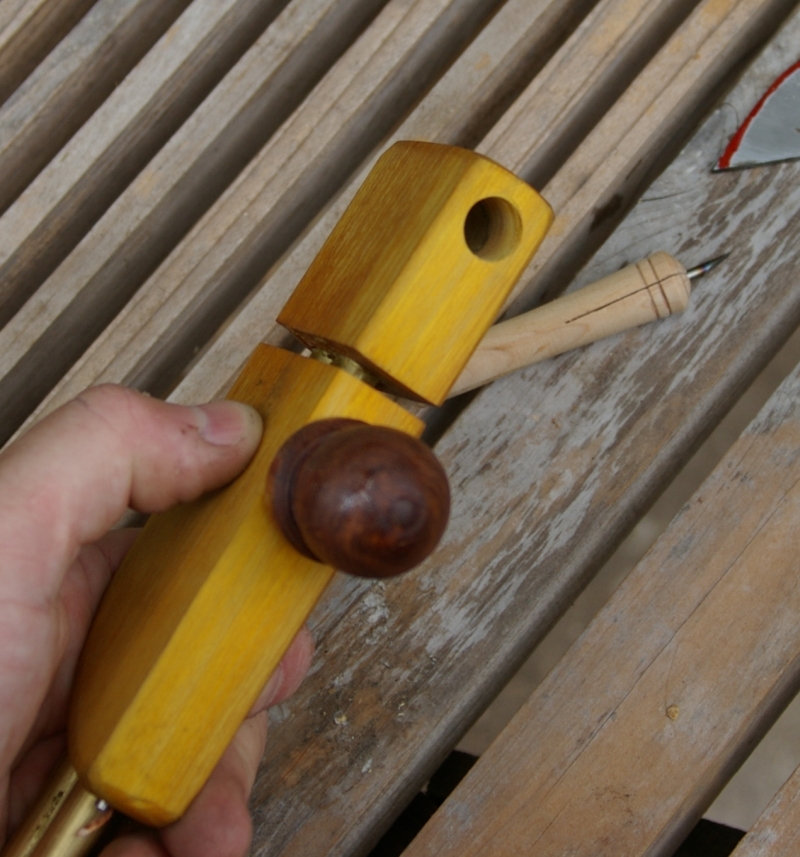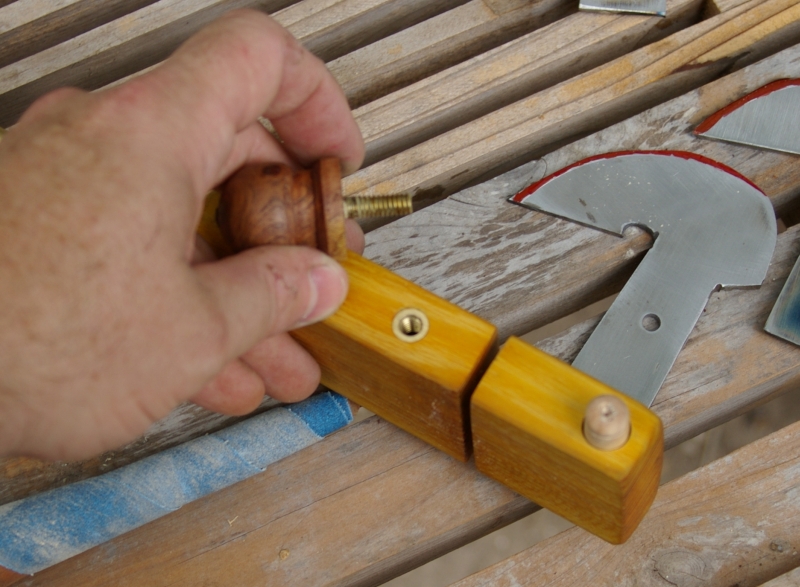Johnathan, recently posted on Woodnet his rendition of an inlay radius cutter. The design is one that Steve Latta showed in an article on Fine Woodworking. Lie-Nielsen sells one based on that design.
The tool is a very stable compass that can cut. My current need is one to mark a radius in steel. So I threw one together. It of course is a bit different.
The body is osage, the knob is mesquite, and the angle adjustable cutter/marker holder is ash.
The points where ground from old high speed steel drill bits and tempered hard. I need them hard because I am marking steel. In the picture below, you can see the radius cut into the edge of a head knife that I am making. The red just outside the cut is to show me where I need to grind off steel. I am using the thread end of a Chicago bolt to put the pivot in to give fine precision.
The arc on one side of the cutter tends to pull in as it cuts. This tends to reduce slop and make for a more precise cut.
The holder is tapered to fit into a tapered hole. The drilled hole in the end of the holder was drilled with the same bit that became the cutter. A pair of slices into the wood makes it grip the blade quite tightly when wedged into a tapered hole.
I even have a point for scribing instead of cutting. I will make another holder to wedge a pencil into the hole as well, when I need it later.
The hole was drilled, and then I used a sanding fid to taper it.
This is my sanding fid. A drill bit pushed to hard into wood so it locked in. Then the wood was turned to make a cone. A slit was cut in the end.
Now sand paper can be fed into the slit and wrapped around the cone.
Once it is wrapped, is is ready to sand out a nice taper.
The locking mechanism is simple, a threaded insert and a knob turned with a bit of brass thread and a nut epoxied into the end.
Opened up this can make a really big circle. Best of all, it is rock solid stable once set into position.
Bob









 A page Dedicated to My Writing
A page Dedicated to My Writing
Hi This might be a silly question but how did you get the drill bit to lock into the piece of wood for the tapered fid?
Thanks,
Cameron
By drilling wrong. Depending on the wood, if you drill too fast without removing the sawdust, the bit will seize in the wood. You could always drill the hole and epoxy the bit into the hole, but a well seized bit can resist all efforts for graceful removal.
Bob